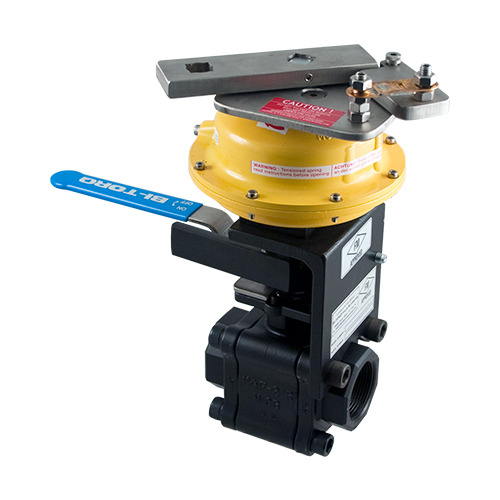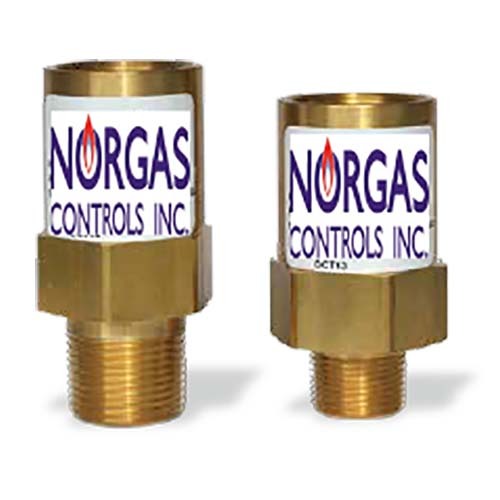Don't wanna be here? Send us removal request.
Text
Ball valves suppliers
The most used type of valve in practically every business is the ball valve. The ball valve can handle practically any application because to its wide range of materials, connections, pressure ratings, and other possibilities.

EFFN Economy Brass Series
The EFFN brass ball valve is a basic, manual shut-off valve and is ideal for natural and propane gas applications. A locking handle is an available option.
Rated Operating Pressure: 400 – 600 PSI
Size Range: 1/4″ – 4″ NPT
Applications: Non-Corrosive Gases & Liquids.
Approvals: CSA 3.16 & CRN
S95 High Quality Brass Series

The S95 brass ball valve is a high quality, manual shut-off valve. With a robust design, it is approved for a variety of gas & liquid applications. Standard with a nickel plated stem, it is ideal for outdoor use. Available Options: Nickel plated body (S95N) & locking handle.
Rated Operating Pressure: 450 – 600 PSI
Size Range: 1/4″ – 4″ NPT
Applications: Non-Corrosive Gases & Liquids, Water & Steam.
Approvals: CSA 3.16, CGA CR91-002, Ulc-C842 & CRN
0 notes
Text
Does your ball valve require maintenance?
The most used type of valve in practically every business is the ball valve. The ball valve can handle practically any application because of its wide range of materials, connections, pressure ratings, and other possibilities.
S80 Lockwing Brass Series
Models: S80, S80G & S8043 Manufacturers: RuB

The S80 lockwing ball valve is a high-quality, manual shut-off valve and can only be locked in the closed position. Originally designed for use on meter sets that require a bypass and have no maintenance required. Available options: Painted grey body (S80G) and insulated union (S8043).
Rated Operating Pressure: 600 PSI
Size Range: 3/4″ — 2″ NPT
Applications: Non-Corrosive Gases & Liquids.
Approvals: CSA 3.16, CGA CR91–002 & Ulc-C842
Read more on gas shutoff ball valves
0 notes
Text
Advantage Of Romet Rotary Gas Meters
For low to high capacity in commercial and industrial applications, rotary meters are frequently utilized. These meter kinds give the best accuracy rangeability from low to large capacity requirements. You can have the best accuracy in the business with the option of electronic modules.
Rotary gas meters have spring-loaded vanes that transfer the gas from the entrance to the outlet and discharge by dividing the spaces between the vanes into discrete volumes.
Rotating gas meters, like those made by Romet, are pressure tested up to four times the MAOP and have their measurement accuracy validated in compliance with ANSI B109.3 standards. These gas meters have systems that guarantee constant measuring accuracy and dependability.
Romet's most sophisticated meter body is the RMT. Our customers may rest easy knowing that precise and dependable measurement will be maintained for the duration of the meter's life thanks to an incorporated mechanical backup counter that is standard across the full RMT size range.
Gas flow rates in excess of a small quantity can be measured with rotary type gas meters. Both indoors and outside can use the rotating gas meter. The utility (custody transfer) grade metering or sub-metering of all sorts of gases, including natural gas and propane vapour, are perfect applications for this meter.
For more information about romet rotary gas meters.
0 notes
Text
A Perfect Way Of Gas Regulator Installation.
The gas regulator and the shut-off valve are the most critical components of any gas meter. Proper installation and venting in line with the local or federal venting requirements are essential aspects of setting up the gas meters for your upstream or downstream equipment or applications. No matter which type of gas regulator you use, it is usually advisable to install a pressure gauge locally at the outlet and inlet of the regulator, along with gauge petcocks to manually isolate each gauge. These gauges monitor the performance and field set the regulator. The gas bottle regulator (gas regulators for LPG bottles) gas flow output reduces this and is required with all LPG gas installation. The regulator always should be fixed on the same level or higher than the cylinder valve.
Read more information about gas regulator installation.
0 notes
Link
0 notes
Text
Gas Valves - Norgas Control
Maintaining the flow of oil and gas through pipelines is a massive task that necessitates the use of various dependable pieces of equipment. One of these critical components is the gas valve. The oil and gas sector could not ensure that crude oil, refined gas, natural gas, and other commodities arrived at their destination without gas valves. To better grasp what is required for the smooth and safe flow of materials, learn the basics of valves, including seven typical types used in the oil and gas business.
What is a Gas Valve, exactly?
A gas valve is a device that regulates oil and gas flow. The volume of liquids and gases allowed through pipes is controlled by opening or shutting an aperture. The valve stops and starts the flow of fluids, adjusts the amounts, controls the direction, regulates pressure, and relieves pressure.
There are no two environments alike. Some of them are quite corrosive. Others, on the other hand, work under constant stress. Many various types of valves have been developed over the years as a result of these variations. Each type of valve has its own set of benefits and drawbacks. Understanding the various types and purposes in the gas and oil business is essential for successful operation and application.
See our article 7 Types of Gas Valves Used in Oil & Gas
0 notes
Link
If you are in the gas or water industry, you know that flow meters are an essential component of your system as they help you measure and control the flow of liquids and gases in your pipes. However, depending on the type of application and the desired level of accuracy, a selection of water meters or gas meters may be available to you. In this article, we provide a basic overview of turbine flow meters, including their strengths and weaknesses, as well as their applications and uses.
0 notes
Link
Control valves are an integral aspect of any production setup where you need to monitor, control or manipulate the flow of a fluid medium through a variety of piping areas of a system. Control valves come in two types – plug valves and ball valves. Even though there are some differences in their overall structure and functioning, both valves are quite similar in their overall purpose and are often used interchangeably in many applications.
0 notes
Link
Many types of appliances and industrial equipment require pressure levels to be controlled within the application. Back pressure gas regulators and pressure reducing regulators are essential pieces of equipment that let you control the gas flow into your system. The pressure sensors within the regulator function according to your specific application’s pressure levels and react to maintain accurate pressure control.
0 notes
Link
There are two types of plug valves: lubricated and non-lubricated. This guide explains the difference between these two main types of plug valves. Learn the advantages, disadvantages, and applications of each so that you can answer your customers’ questions about this simple but highly effective equipment.
What is a Plug Valve?
First, a brief intro on plug valves. Plug valves are on-off valves used in a wide variety of applications. Users choose them for frequent operation tasks, and they are quarter-turn valves. There are three port patterns: regular, Venturi, and short. You can learn more about plug valves by reading our previous article: What is a Plug Valve and What is it Used for.
Lubricated plug valves and non-lubricated plug valves each have their uses, described below.
Non-Lubricated Plug Valves
Non-lubricated plug valves have a sleeve or liner installed in the cavity. The tapered plug wedges the sleeve against the plug body. In this way, the non-metallic sleeve decreases friction during operation. These gas plug valves require little maintenance, and their compact size makes them convenient to pack along with other equipment.
0 notes
Text
Learning About Water Meter Types
Measuring water usage in applications across residential, commercial and industrial installations requires a variety of water meter types. Here is an overview of the different water meter types, how they are used, and how to choose the right one for your application.
What is a Water Meter and What Does it Do?
Water meters measure the quantity and volume of water that passes through a pipe or outlet. The standard measurements used are gallons or cubic feet. With these metrics, you are able to record the cumulative volume of water passing through the meter.
Water flow meters are used to measure not only the volume of water passing through but also the different characteristics of the liquid such as:
Speed of flow
Quantity used
pH balance
Quality
Electric conductivity
Water flow meters calculate water bills but can also provide indications on how much of a liquid to add to a process or product.
Original Source: https://norgascontrols.com/blog/water-meters/learning-about-water-meter-types/
0 notes
Link
Measuring water usage in applications across residential, commercial and industrial installations requires a variety of water meter types. Here is an overview of the different water meter types, how they are used, and how to choose the right one for your application.
0 notes
Link
If you are in the gas or water industry, you know that flow meters are an essential component of your system as they help you measure and control the flow of liquids and gases in your pipes. However, depending on the type of application and the desired level of accuracy, a selection of water meters or gas meters may be available to you. In this article, we provide a basic overview of turbine flow meters, including their strengths and weaknesses, as well as their applications and uses.
0 notes
Photo

Fusible link valves are also known as thermal shut-off valves. They are an automatic shut-off valve that cuts of any gas or liquid in the pipeline once a fire is present. The fusible link topwork assemblies are more commonly installed on ball valves and offer the best possible performance in any industrial or commercial application.
0 notes
Link
Comprehensive selection of gas regulators for all applications and projects, ask our experts for advise.
0 notes
Photo

Designed to vent directly to atmosphere in outdoor installations, these “pop” style relief valves are economical for high pressures with high flows. Brass construction with a weather cap is standard.
Pressure Range (Setting): 45 – 250 PSI
Maximum Inlet Pressure: 400 PSI
Size Range: 3/4″ & 1″ NPT
0 notes
Link
Back pressure regulators are installed downstream of a pressure reducing regulator and vent excess pressure in case the main regulator fails to close.
0 notes